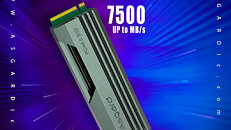
Mnemonic Electronic Debuts at COMPUTEX 2024, Embracing the Era of High-Capacity SSDs
On June 4th, COMPUTEX 2024 was successfully held at the Taipei Nangang Exhibition Center. Mnemonic Electronic Co., Ltd., the Taiwanese subsidiary of Longsys, showcased industry-leading high-capacity SSDs under the theme "Embracing the Era of High-Capacity SSDs." The products on display included the Mnemonic MS90 8TB SATA SSD, FORESEE ORCA 4836 series enterprise NVMe SSDs, FORESEE XP2300 PCIe Gen 4 SSDs, and rich product lines comprising embedded storage, memory modules, memory cards, and more. The company offers reliable industrial-grade, automotive-grade, and enterprise-grade storage products, providing high-capacity solutions for global users.
High-Capacity SSDs
For SSDs, Mnemonic Electronic presented products in various form factors and interfaces, including PCIe M.2, PCIe BGA, SATA M.2, and SATA 2.5-inch. The Mnemonic MS90 8 TB SATA SSD supports the SATA interface with a speed of up to 6 Gb/s (Gen 3) and is backward compatible with Gen 1 and Gen 2. It also supports various SATA low-power states (Partial/Sleep/Device Sleep) and can be used for nearline HDD replacement, surveillance, and high-speed rail systems.
High-Capacity SSDs
For SSDs, Mnemonic Electronic presented products in various form factors and interfaces, including PCIe M.2, PCIe BGA, SATA M.2, and SATA 2.5-inch. The Mnemonic MS90 8 TB SATA SSD supports the SATA interface with a speed of up to 6 Gb/s (Gen 3) and is backward compatible with Gen 1 and Gen 2. It also supports various SATA low-power states (Partial/Sleep/Device Sleep) and can be used for nearline HDD replacement, surveillance, and high-speed rail systems.











































